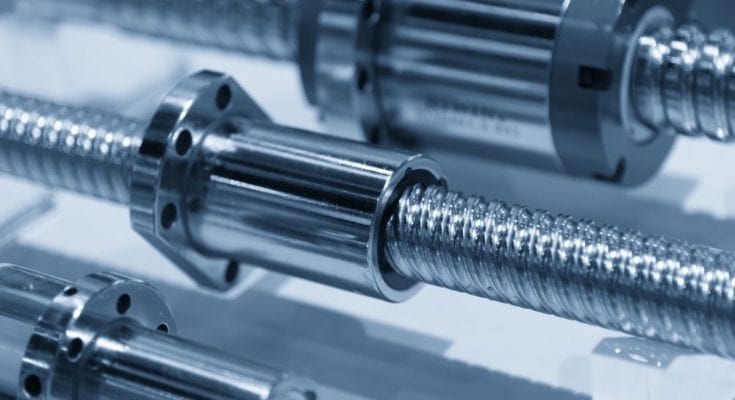Lead screws and ball screws are two similar types of screws that are used in machines to convert rotational motion to linear motion. In appearance and function, both types of screws are nearly identical. So, if you’re choosing a screw assembly to use in your machine, how will you know when to use a lead screw vs. a ball screw? This article will explain the differences between the two types and will examine when each should be used.
What Is a Lead Screw?
A lead screw is a screw assembly that consists of a screw shaft and a nut. Both the shaft and nut have threads that match up with one another, allowing the nut to rotate along the shaft. Because the shaft and the nut are in direct contact with one another, they create friction during movement.
What Is a Ball Screw?
Like a lead screw, a ball screw consists of a screw shaft and nut, but the ball screw also incorporates another important part into its design—ball bearings. The space between a ball screw’s nut and shaft houses a system of tiny balls that travel between the threads as the nut moves along the shaft. This helps minimize friction.
Which Should You Use?
In terms of design and function, lead screws and ball screws are very similar but not always interchangeable. Because of their self-locking capabilities, inexpensiveness, and effectiveness in applications that don’t require high amounts of accuracy or a lack of friction, lead screws are a good choice for applications that don’t require the extra qualities of a ball screw to function. They’re also the better option for applications that operate on a vertical axis.
Ball screws are best for machinery that requires a high amount of precision and low amounts of friction to operate properly. Ball screws are also the better option for supporting very heavy loads and high speeds, as is the case in high-powered machine tools. One common myth about ball screws is that they are always the better choice over lead screws, but this is not always the case. The type of screw assembly you choose will depend on the machine the screw will be used in and the amount of accuracy, efficiency, and load-bearing capability that the machine requires.
Knowing when to use a lead screw vs. a ball screw will help you choose the best and most cost-effective part for your machine.
FAQ
What is a lead screw?
A lead screw is a screw assembly that consists of a screw shaft and a nut. Both the shaft and nut have threads that match up with one another, allowing the nut to rotate along the shaft. Because the shaft and the nut are in direct contact with one another, they create friction during movement.
What is a ball screw?
Like a lead screw, a ball screw consists of a screw shaft and nut, but the ball screw also incorporates another important part into its design—ball bearings. The space between a ball screw’s nut and shaft houses a system of tiny balls that travel between the threads as the nut moves along the shaft. This helps minimize friction.



